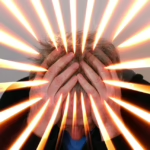The Hidden Dimensions: How Higher Dimensions Might Shape Our Reality
Introduction
For centuries, the notion of dimensions beyond our typical three-dimensional experience has intrigued scientists, philosophers, and thinkers alike. The idea that our universe is more complex than it appears is not just a philosophical preference; it is a scientifically investigated hypothesis. This article explores the hidden dimensions that may exist beyond our traditional understanding, delving into their implications for physics, cosmology, and the very nature of reality itself.
The Nature of Dimensions
In everyday terms, dimensions refer to measurable extents such as length, width, height, and time. However, in mathematics and physics, dimensions can extend to complex and abstract spaces. A "dimension" can be thought of as an independent degree of freedom; in a two-dimensional space, you can move up and down or left and right, while in three dimensions, you add depth to that movement. The concept of additional dimensions offers numerous possibilities that challenge our conventional understanding of reality.
The Four-Dimensional Continuum
To appreciate higher dimensions, we must first examine our familiar three-dimensional space, extended by time into the fourth dimension. Einstein’s theory of relativity revolutionized our conception of space and time, proposing a four-dimensional spacetime continuum. Objects do not simply exist in space; they exist in space and time, which are interlinked. This framework provides a foundation for exploring greater dimensions.
String Theory and Higher Dimensions
At the forefront of modern physics, string theory posits that the fundamental constituents of the universe are not point-like particles but rather tiny, vibrating strings. These strings can vibrate in various ways, giving rise to different particles. A crucial aspect of string theory is that it requires additional spatial dimensions for mathematical consistency; typically, ten or eleven dimensions are proposed.
The Geometry of Extra Dimensions
These extra dimensions are not immediately visible to us because they may be compactified or curled up at subatomic scales. The sophisticated geometry of these dimensions can significantly impact physical theories. For example, the specifics of how dimensions are compactified may dictate the properties of particles and forces in our observable universe.
Calabi-Yau Manifolds
One of the mathematical constructs used to visualize higher dimensions in string theory is the Calabi-Yau manifold. These complex shapes are crucial in determining the characteristics of particles and forces in the universe, as the way dimensions are shaped directly influences physical properties like mass and charge.
Implications for Cosmology
The implications of higher dimensions extend beyond particle physics to cosmology, the study of the universe as a whole. The existence of higher dimensions could offer explanations for phenomena that challenge current models of cosmology.
Dark Matter and Dark Energy
Dark matter and dark energy comprise most of the universe, yet their nature remains elusive. Higher dimensions provide intriguing possibilities for explaining these cosmic mysteries. Some theories suggest that dark matter could be manifestations of particles existing in higher dimensions, which we perceive only indirectly through their gravitational effects.
The Multiverse Hypothesis
Higher dimensions are also pivotal in the multiverse hypothesis, suggesting that our universe may be just one of many. In this multi-dimensional landscape, different regions could have distinct physical laws, potentially explaining the fine-tuning phenomenon observed in our universe—why certain constants appear finely adjusted to support life.
Philosophical Dimensions
Shifting from the realm of physics to philosophy, the notion of higher dimensions prompts questions about consciousness and perception. If higher dimensions exist, can they affect our perception of reality?
The Nature of Reality
Philosophers such as Immanuel Kant have suggested that our understanding of reality is limited by our sensory perception. If higher dimensions exist, they challenge the very fabric of how we comprehend existence. Could consciousness itself be a multi-dimensional phenomenon, extending beyond current frameworks of understanding?
Human Experience and Higher Dimensions
Moreover, an exploration of higher dimensions invites speculation about human experience itself. Could experiences such as intuition or insight be glimpses of higher-dimensional realities? While these notions may border on metaphysical, they provide fertile ground for considering the broader implications of higher dimensions on human consciousness.
Current Research and Developments
The investigation into higher dimensions is an active field of research, with ongoing efforts to substantiate theoretical models. Major physics experiments aim to probe the existence of extra dimensions and their effects.
Particle Accelerators
Facilities like the Large Hadron Collider (LHC) are at the forefront of this exploration. By smashing particles together at unprecedented energies, researchers hope to uncover evidence of higher dimensions through phenomena that cannot be explained by our current three-dimensional outlook.
Cosmological Observations
Similarly, astronomers monitor cosmic phenomena that may hint at the presence of hidden dimensions. Observations of cosmic microwave background radiation and gravitational waves could offer indirect evidence that supports theories involving higher dimensions.
Conclusion
The exploration of higher dimensions is a complex journey that intertwines the fabric of physics, cosmology, and philosophy. While our current understanding remains limited, the pursuit of this knowledge could reshape our understanding of reality itself. The implications of higher dimensions pose profound questions about existence, consciousness, and the universe’s very structure.
The quest for hidden dimensions is not just a scientific endeavor; it’s a deeply philosophical exploration that challenges us to reconsider what we know, what we believe, and what it means to exist in a universe that may be far more complex than it appears. As we continue to engage with these ideas, we come closer to uncovering the hidden dimensions of reality that await discovery.
References
- Greene, B. (1999). The Elegant Universe: Superstrings, Hidden Dimensions, and the Quest for the Ultimate Theory. W.W. Norton & Company.
- Kaluza, T. (1921). "On the unity problem of physics." Sitzungsberichte der Preussischen Akademie der Wissenschaften zu Berlin.
- Witten, E. (1995). "String theory and the intersection of branes." Nuclear Physics B.
- Bousso, R. (2002). "The holographic principle." Classical and Quantum Gravity.
- Vafa, C. (1996). "Black holes and strings." The Harvard Physics Department.
- Martel, H., & Shapiro, S. L. (1998). "The role of higher dimensions in contemporary physics." Physics Reports.
- Carroll, S. M. (2001). "A new perspective on dynamical dark energy: the cosmological constant as a reflection of vacuum energy." Physical Review D.
- Susskind, L. (1995). "The World as a hologram." Journal of Mathematical Physics.
This article provides a comprehensive overview of the theories and implications related to higher dimensions and their potential roles in shaping our reality. By integrating complex scientific concepts with philosophical reflections, it encourages a deeper inquiry into the nature of existence as we seek to comprehend the multi-dimensional universe.


























Add Comment